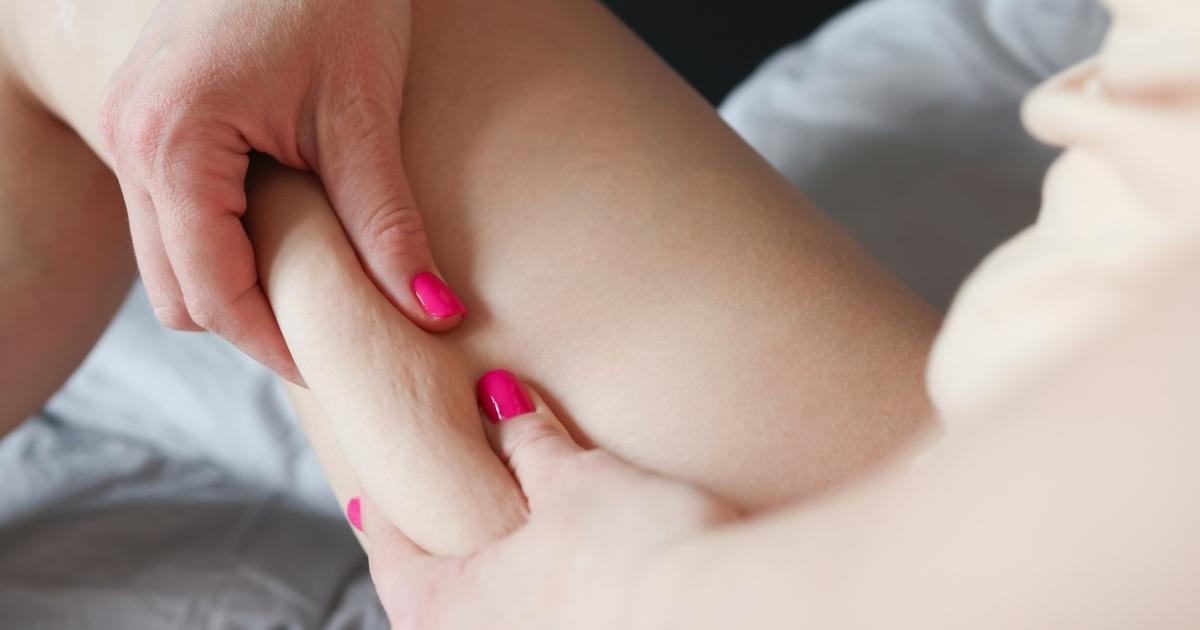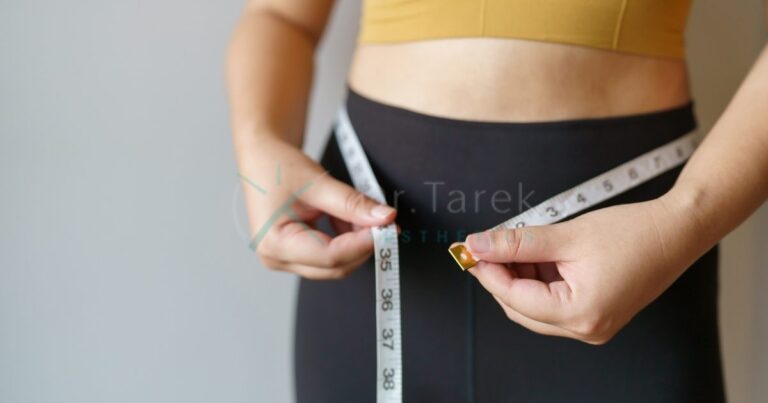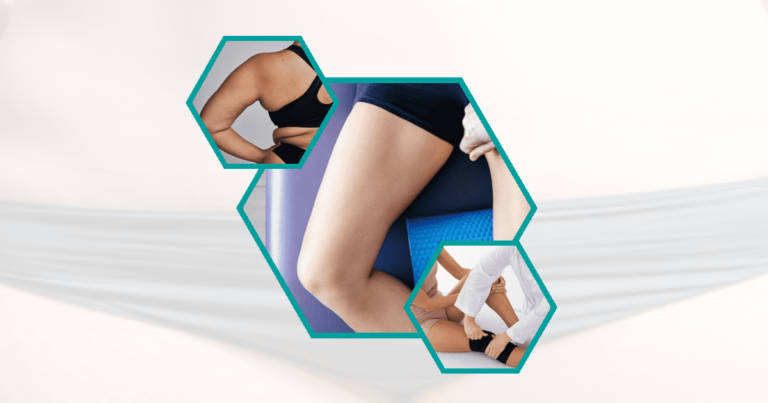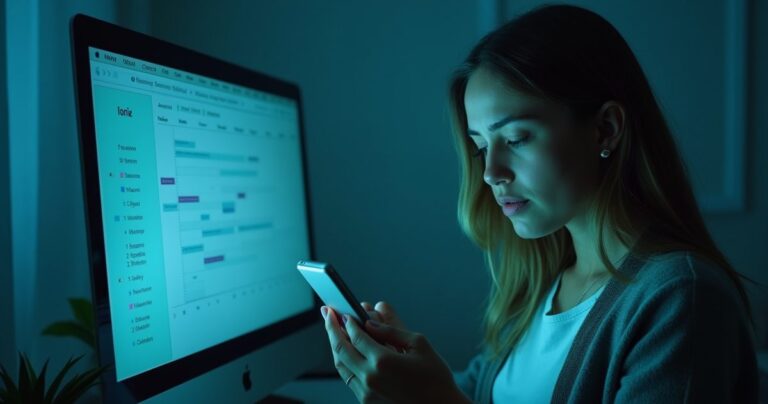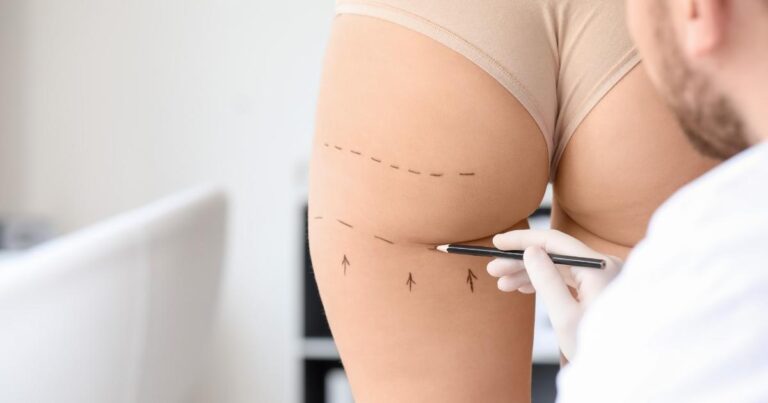Thigh liposuction has become increasingly popular in body contouring, transforming one’s physical appearance. However, many patients express concerns about the potential aftermath of the procedure, particularly regarding the development of scars resulting from thigh liposuction. This article explores various strategies for effectively managing and minimising these scars while highlighting the importance of utilising compression garments.
Post-Liposuction For Thigh Liposuction Scars: Causes and Treatment Approaches
Scarring commonly occurs as the body heals after liposuction surgery. The extent of these scars can be influenced by factors such as the surgeon’s technique, the patient’s skin type, and post-operative care. Various preventive and curative treatment approaches are available to manage and reduce scarring effectively.
- Healing Process: The body’s healing response to surgery can lead to the formation of scars.
- Influencing Factors: Several factors, including surgical technique, skin type, and post-operative care, can impact the severity of scarring.
- Treatment Approaches: Various strategies exist to manage and diminish scarring, such as topical creams, laser therapy, and compression garments.
Role of Compression Garments in Healing Liposuction Scars: A Deeper Insight
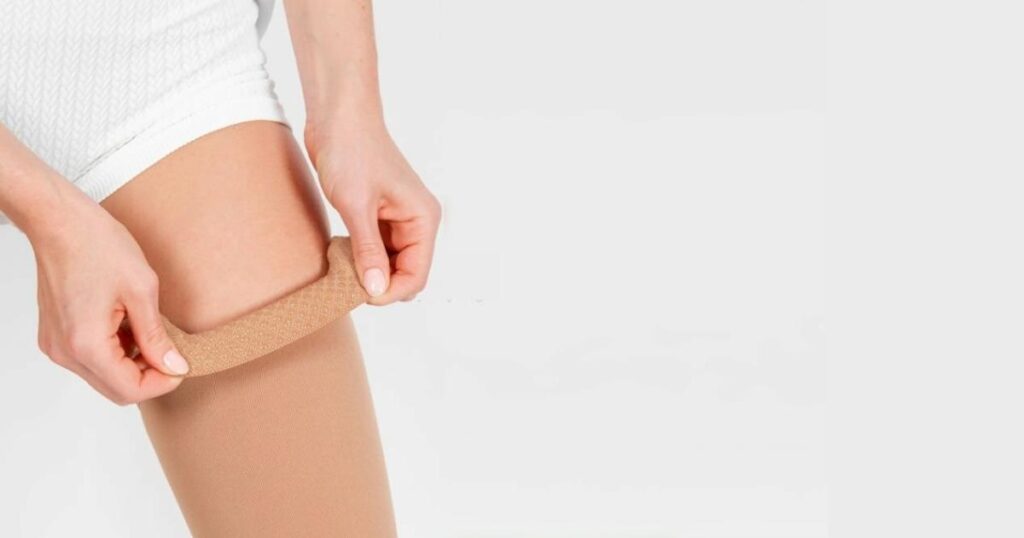
Compression garments are vital in facilitating healing and minimising post-liposuction scars. These specialised garments consistently apply pressure to the treated area, helping reduce swelling and enhance blood circulation. By adhering to the surgeon’s recommendations regarding garment usage, patients can promote a faster healing process and diminish the visibility of scars.
| Benefits of Compression Garments | Explanation |
| Reduces Swelling | Applies pressure to control fluid accumulation |
| Improves Blood Flow | Enhances circulation to promote healing |
| Supports Tissue Healing | Helps tissues conform to new contours |
Selection Criteria for Effective Compression Garments: Materials and Fit
The effectiveness of compression garments largely hinges on the breathability of the material and the fit. The material must allow the skin to ‘breathe’, ensuring comfort and longevity, while the fit should balance between providing adequate pressure to aid healing without causing discomfort.
Book A Consultation With Dr Tarek Bayazid
Top-rated Plastic Surgeon For Liposuction in Dubai
Installment Plan Available
Striking this balance is crucial in optimising the healing process, reducing scarring and promoting quicker recovery, whether for an athlete with an injury or a post-operative patient. A well-chosen compression garment can be a game-changer, enhancing comfort and speeding up the healing process.
- The fabric of the compression garment should possess three key qualities: breathability, hypoallergenic properties, and durability. By ensuring these features, it can consistently maintain the necessary pressure.
- In the search for a perfect fit, an optimal garment ensures that the compression level strikes a delicate balance. It neither causes discomfort nor restricts mobility, allowing freedom of movement without sacrificing comfort.
- Choosing an appropriate compression garment significantly impacts the healing process and scarring outcomes after a liposuction procedure.
How to Properly Use Compression Garments: Guidelines and Tips
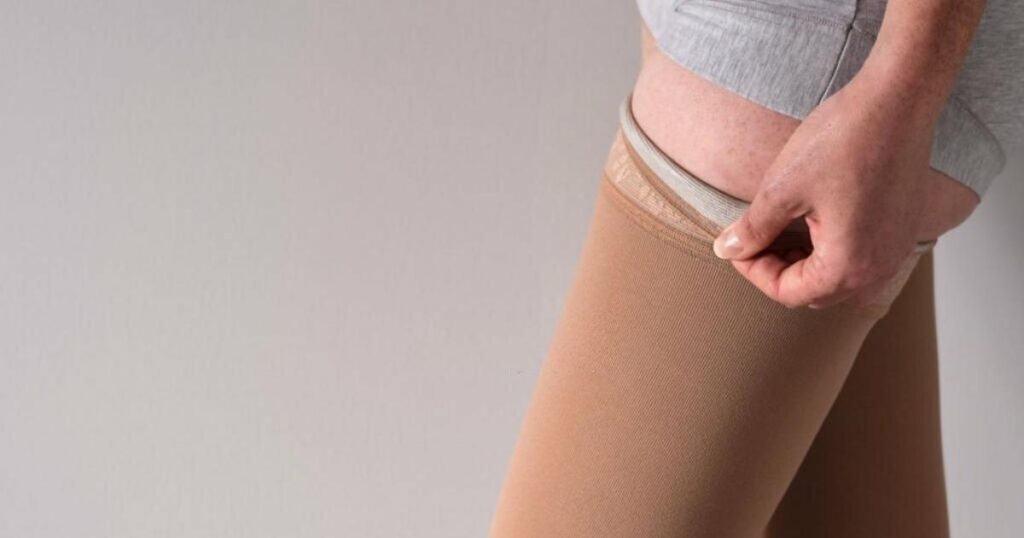
The proper utilisation of compression garments is equally vital to the selection process. These garments should be worn promptly after surgery and as recommended by the surgeon, ensuring they are removed only when necessary for cleaning. Additionally, maintaining these garments correctly is crucial to preserve their functionality.
| Guidelines/Tips | Description |
| Proper Size | Make sure your compression garment is the correct size. It should be tight but not restrictive to the point of causing pain or discomfort. |
| Wear Duration | Follow your doctor’s instructions regarding how long you should wear your compression garment daily. This is typically 24 hours a day for the first few weeks, then reduced to daytime or nighttime. |
| Putting it On | Put on the garment carefully to avoid causing pain or discomfort to the treated area. Some garments may require assistance to put on correctly. |
| Taking it Off | You’ll typically only remove the garment for showers and to wash it, but always follow your surgeon’s instructions. |
| Cleaning | Keep the garment clean by washing it regularly. Always follow the manufacturer’s washing instructions to maintain its elasticity and function. |
| Physical Activity | Wear your garment during physical activity, especially during the initial healing phase, unless otherwise instructed by your doctor. |
| Post-Surgery Check-ups | Bring your compression garment to post-surgery check-ups so your surgeon can ensure it fits correctly and provides the necessary support. |
| Replacement | If your garment becomes too loose due to weight loss or wear and tear, or if it’s damaged, you may need to replace it. Consult with your doctor before making any changes. |
Expert Insights: Surgeon’s Perspective on Thigh Liposuction Scars and Compression Therapy
Surgeons play a vital role in understanding post-liposuction scarring and the effectiveness of compression therapy. Their insights offer scientific explanations for using compression garments to aid in the healing process. Moreover, these experts provide practical advice to maximise the benefits of compression therapy.
- Medical Perspective: Surgeons can offer a deeper understanding of post-liposuction scarring from a medical standpoint.
- Compression Therapy: Experts can explain the science behind the use of compression garments in healing and scar reduction.
- Practical Advice: Surgeons often provide applicable guidelines and tips to maximise the effectiveness of compression therapy.
Complementary Therapies: The Impact of Diet, Exercise, and Skincare on Scarring Post-Liposuction
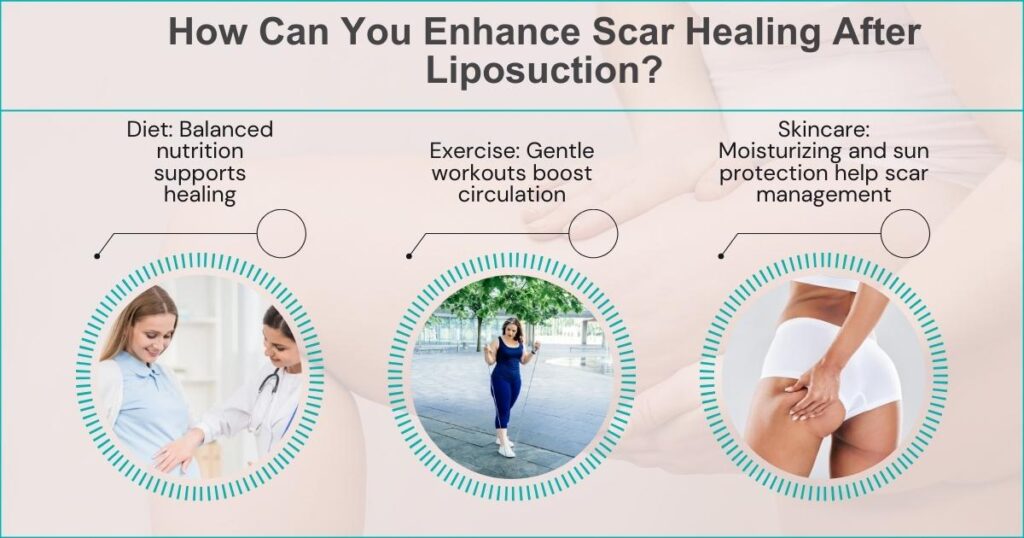
Along with compression garments, lifestyle factors like diet, exercise, and skincare can contribute to scar healing post-liposuction. A balanced diet can support the body’s healing process, while gentle exercise can promote circulation. Skincare, including moisturising and protecting scars from the sun, can also help reduce their appearance.
- Diet: A balanced, nutritious diet can aid faster healing and potentially reduce scarring.
- Exercise: As the surgeon advises, gentle exercises can promote blood circulation and support healing.
- Skincare: Regular moisturising and sun protection can help manage and reduce the appearance of post-liposuction scars.
The Science Behind Compression Therapy: Understanding Its Healing Mechanisms
The science of compression therapy involves the understanding that consistent pressure can aid in healing and reduce scarring. Compression garments support healing by reducing swelling, improving circulation, and assisting with skin retraction. A deeper comprehension of these mechanisms enables patients to utilise these garments more effectively.
- Swelling Reduction: Compression garments help reduce swelling post-surgery, leading to faster healing and less noticeable scars.
- Improved Circulation: Compression garments can improve blood circulation by applying constant pressure, thus facilitating better healing.
- Skin Retraction: These garments aid in skin retraction, which can minimise the risk of irregular contours and scarring post-liposuction.
Thigh liposuction scars, though inevitable, need not be a lasting concern. By diligently using compression garments, adopting appropriate lifestyle adjustments, and seeking professional advice, one can remarkably diminish the visibility of these scars. As advances in research continue to unfold within this domain, we can hold onto a promising outlook for even more effective scar management methods in the future.
Dr Tarek Bayazid, a prominent plastic surgeon in Dubai, is known for his expertise in facial rejuvenation and body contouring. Clients seeking remarkable results can trust Dr Bayazid’s patient-centric approach, dedication to staying updated with the latest developments in the field, and impeccable track record. Read this article to find more aboutCost of Liposuction in UAE
Looking to reduce your thigh liposuction scars? Take the first step towards your aesthetic transformation. Book a consultation with Dr Tarek Bayazid today!
See related:Discover the Most Effective Fat-Removal Liposuction
FAQs
How long does it take for scars to heal after thigh liposuction?
The healing process differs among individuals. Generally, it takes several weeks to a few months for scars to fully heal. As time passes, the appearance of scars usually improves, gradually becoming less noticeable within one to two years after surgery.
Can I completely avoid thigh liposuction scars?
Regrettably, all surgical procedures, including liposuction, carry the inherent risk of scarring as a natural part of the body’s healing process. Nonetheless, adopting proper post-operative care measures like utilising compression garments can effectively minimise the visibility of these scars.
How do compression garments help reduce thigh liposuction scars?
Compression garments can be beneficial in reducing swelling and enhancing blood flow. They are crucial in promoting tissue healing and minimising the visibility of scars. Additionally, they assist in maintaining skin firmness, preventing any irregular contours or further scarring from occurring.
What other factors can affect the healing of thigh liposuction scars?
Compression therapy is one aspect that can aid in scar healing. Along with this, factors like maintaining a balanced diet, engaging in gentle exercise, practising skincare routines, and diligently following your surgeon’s post-operative care instructions can also influence the healing process.
Additionally, individual aspects such as skin type, age, and overall health must be considered when considering how scars heal.
Are there other treatments for thigh liposuction scars besides compression garments?
Other treatments, including topical creams, laser therapy, and specific medical procedures, can also be beneficial in reducing the appearance of scars. It is important to discuss with your surgeon or dermatologist to understand better which options may work best for you.
What are the 10 warning signs that indicate a liposuction procedure may have gone wrong?
Some warning signs that may indicate a problematic liposuction procedure include experiencing excessive pain, severe swelling or bruising, seeing unusual discharge from the incision site and persistent fever. Other possible warning signs could be nausea or vomiting, skin discolouration around the treated area, drastic changes in body temperature, unexplained weight gain, symptoms of an allergic reaction, or irregular heartbeats.

